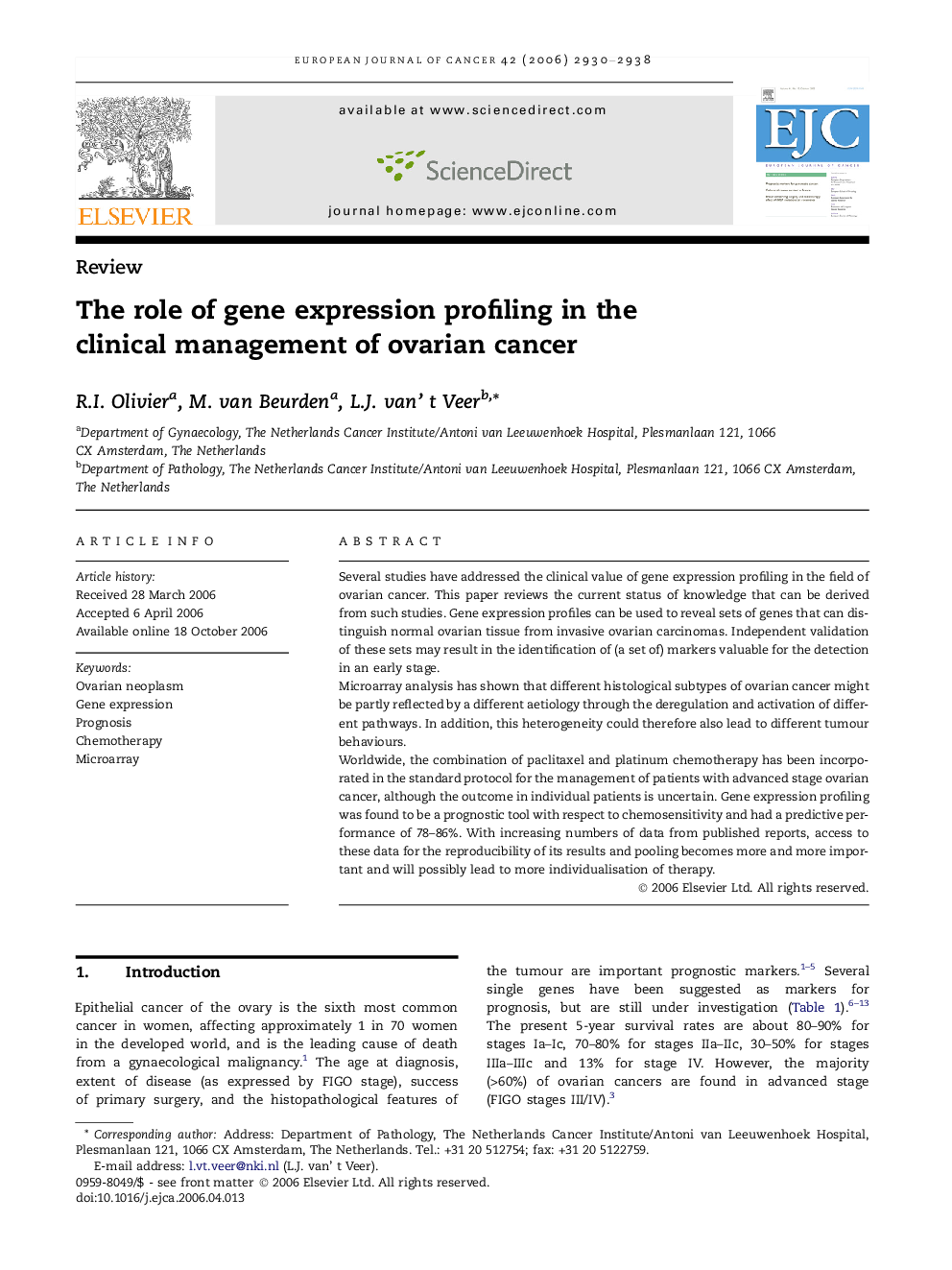| Article ID | Journal | Published Year | Pages | File Type |
|---|---|---|---|---|
| 2125888 | European Journal of Cancer | 2006 | 9 Pages |
Several studies have addressed the clinical value of gene expression profiling in the field of ovarian cancer. This paper reviews the current status of knowledge that can be derived from such studies. Gene expression profiles can be used to reveal sets of genes that can distinguish normal ovarian tissue from invasive ovarian carcinomas. Independent validation of these sets may result in the identification of (a set of) markers valuable for the detection in an early stage.Microarray analysis has shown that different histological subtypes of ovarian cancer might be partly reflected by a different aetiology through the deregulation and activation of different pathways. In addition, this heterogeneity could therefore also lead to different tumour behaviours.Worldwide, the combination of paclitaxel and platinum chemotherapy has been incorporated in the standard protocol for the management of patients with advanced stage ovarian cancer, although the outcome in individual patients is uncertain. Gene expression profiling was found to be a prognostic tool with respect to chemosensitivity and had a predictive performance of 78–86%. With increasing numbers of data from published reports, access to these data for the reproducibility of its results and pooling becomes more and more important and will possibly lead to more individualisation of therapy.
